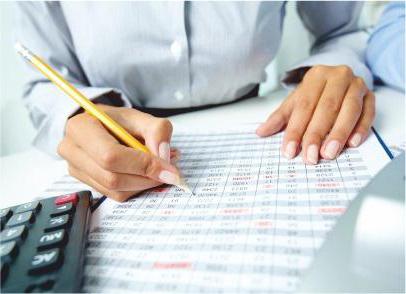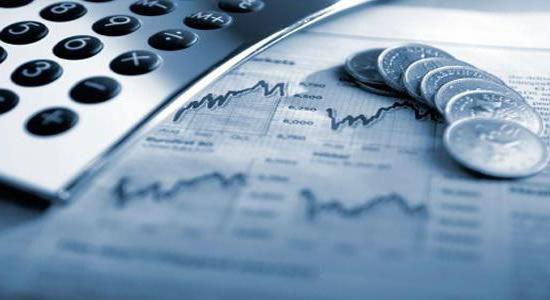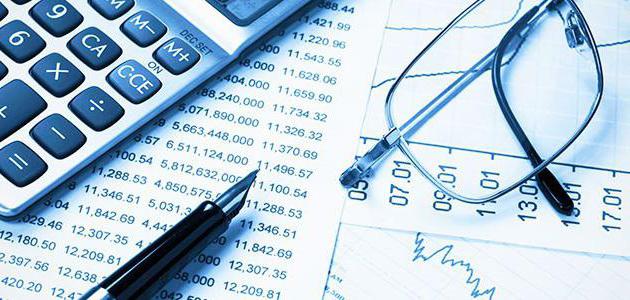Own business is always fraught not only with profit, but also with expenses: for wage labor, payment of wages to employees, payment of taxes - money is needed for everything. But besides these costs, which are still more connected with the result of the work, there are those that are associated with the direct process of activity — these are the costs associated with the production and sale of products. What are they, what does the state say about such costs and can they be optimized in any way?
The legislative framework
To begin with, the costs associated with production and sales are primarily subject to the Tax Code, its 253 article, to be more precise. According to the Tax Code, expenses for:
- Direct production (i.e. manufacturing), storage and delivery of goods, as well as the performance of any work and the provision of services, as well as the sale of works and services. That is, if the company produced, for example, a table, then the funds that were spent on its manufacture (from buying raw materials to packing it in a box before being sent to the warehouse), renting a storage room, transportation (logistics costs are calculated here) - all this It is considered production and distribution costs. The same group includes the costs of, say, nails that a handyman uses to render his services.
- Maintaining the proper condition of the equipment used in the production process or the provision of services. It takes into account maintenance, and timely repair work, and modernization, if necessary - any costs associated with the tool.
- The development of natural resources - in this case, they are considered as part of the tools.
- Scientific and technical progress. Without it, it will not be possible to maintain equipment in good condition, as well as provide the most relevant services.
- Insurance. To engage in entrepreneurial activity, while not ensuring the safety of not only employees, but also the safety of equipment, is simply unreasonable. It is better to minimize all possible risks by insuring both human and technical resources.
- Other similar costs.
Obviously, the costs associated with production and sales are divided into many groups. Almost everything that directly or indirectly relates to the provision of a service or the performance of some work, the production of a certain product and its preparation for sale can be attributed to this large group. The only question is which category of costs a particular product or service will fall into. The paradox is that the last categorization does not affect taxation.
Components
In addition, it is worth noting that the costs associated with production and sales consist of costs for:
- The material part of the production or provision of services. Here we are talking about all the resources used in the process of manufacturing a certain product or fulfilling its obligations associated with a service. These costs can be divided into two subgroups: direct and distributed. Direct costs associated with the production and sale go to the provision of only one type of service or the release of a single type of goods; their costs are fixed by measurements (it is known in advance how much this or that resource will be needed to provide a certain service or produce goods).The distributed costs are associated with the participation of the resource in the manufacture of several types of products, and their accounting is carried out by means of the distribution of their value for all goods in the production of which they were used. For example, if a company is engaged in the manufacture of furniture, then the use of granite is not very characteristic for it, it will only be used in the manufacture of one model, that is, it will be related to direct costs. As for wood, it is used for almost the entire range of products, that is, it will be recorded as distributed costs.

- Remuneration of labor. Here, the salary of production workers and the payment of incentives and social support are also taken into account. This also includes remuneration to non-staff employees whose services the company does not use regularly (invited economists if the company cannot afford its own, or designers if they are usually not needed).
- Amounts accrued depreciation. Many entrepreneurs like to play with this item. Depreciation costs cover the costs of maintaining equipment (most often) in good condition for further production. Usually a certain amount, which will be invested in the future in the modernization of equipment, its repair and other work with it, is allocated for a certain period of time. Monthly depreciation costs are invested in the value of the goods, so that the buyer pays for them by purchasing this product. The trick is that with a decrease in the depreciation period, the amount of monthly costs will increase (the total costs will remain the same, but they will increase if you divide them by a shorter period of time), that is, the manufacturer will receive more profit in a shorter period of time.
other expenses
The above lists included other costs associated with production and sales. What is meant by them?

According to the Tax Code, this group includes taxes and fees that are levied on manufactured goods or services rendered, as well as customs duties that exporters or importers of goods have to pay. Separately, it is worth noting that the law does not oblige entrepreneurs to include the costs of sales and production in the total amount of expenses that will then be taxed. Paying tax on them is a right, but not an obligation, therefore, some entrepreneurs prefer to fix such investments only in their own accounting department, without informing the tax authorities about them. It is worth noting that, with some efforts, even these expenses can be attributed to income tax, which will allow paying a much lower amount for them.
Attention! Creation of working conditions
But not all costs avoid the excessive attention of tax authorities. There is a peculiar list of expenses that the “controllers” check with special care.
Among them, for example, are expenses for good working conditions. They usually do not fall into income tax and are paid separately, which is completely disadvantageous to the enterprise. True, there is an opportunity to convince tax inspectors that such care for employees is not a whim of management, but a production necessity, thereby transferring other expenses associated with production and sales to the category of income-taxed income.

For example, the company decided that its employees should eat in their own dining room, and not go to nearby cafes. The equipment of the corresponding premises, the purchase of furniture, the hiring of additional personnel - all this has already required an investment, but taxes have not yet been paid! In order for the company to prove: a canteen is a necessity, and therefore falls into profit tax, the following arguments can be used:
- By law, an employer is required to provide their employees with a place to eat.
- If there are no catering establishments near the place of work, then your own dining room is necessary to ensure the household needs of employees (the obligation of the latter is enshrined in the Labor Code).
And if the company decided to purchase air conditioning for its employees, you can put pressure on the fact that, according to sanitary standards, there are certain requirements for the temperatures inside the working room, for which air conditioning is necessary. As for coolers in workrooms, they will become a production necessity if tap water cannot be drunk, and this must be confirmed by appropriate special documentation. Touching the accounting of costs associated with production and sales may also include the costs of lounges for employees, which are necessary to ensure the sanitary and domestic needs of workers, especially a similar item of expenditure is relevant for enterprises where there are several work shifts or there is an irregular work schedule, that is where the employee may even have a physical need to relax normally.
That is, in order to include some costs, which, at first glance, are in no way connected with the release of goods or the provision of services, in this list, it’s enough to find suitable items in the sanitary rules or the Labor Code, and besides that, stock up with documents, confirming the correctness (for example, acts on the state of the occupied office). Theoretically, it is possible to prove the legitimacy of the requirements without additional papers, but nevertheless, documentary evidence looks much more impressive than the words of neighbors and acquaintances.
Transport costs
Another type of cost associated with production and sale, rather, indirectly, is the cost of vehicles. Some companies prefer to use the personal transport of their employees than to purchase their own, "entrepreneurial". In order for such actions to be correct from the point of view of legislation, you must either draw up an appropriate lease agreement or pay a certain amount of money to the employee once a certain time (usually once a month) as compensation for using his car in the affairs of the company.
Compensation is subject to income tax, which already reduces the tax burden on it. In addition, it depends on engine power (it will be either 1,200 or 1,500 rubles).

But car rental will be more economically beneficial: absolutely all expenses associated with transport can be included in income tax. And the amount that the employee will receive for giving his car for temporary use will not be subject to insurance deductions, as would be the case in the case of compensation, when the costs associated with production and sale would be subject to serious payments. According to experts, the savings will be almost double, which in the modern world plays a significant role.
Land issue
The composition of the costs associated with production and sale also includes the costs of maintaining land. By purchasing it, the company must decide whether it will pay the income evenly (that is, the amount will be divided into equal parts and paid within a certain period) or unevenly (in amounts that will not exceed 30% of income tax for the last reporting period. That is the amount will vary until the full payment of tax liabilities). It is worth noting that the right to choose to pay taxes applies only to those land plots that before the acquisition belonged to the state, and were also purchased from 2007 to 2011, for other plots these rules do not apply.
Uniform way | Uneven way |
|
|
Why is all this necessary?
By the way, what’s the point of accounting for costs associated with production and sales? It’s strange not to mention this once, having examined not only the general classification of such costs, but also some of their most common types!

The most logical explanation is that fixing all such expenses is necessary in order to have a real idea of how much of the enterprise has already been spent. In addition, high-quality cost accounting will help to timely identify losses and expenses that could have been avoided under certain conditions, thereby saving money. Cost accounting will also help to control the process of distribution of resources and financial flows (in particular, wages, depreciation expenses) within the company. The presence of such a large amount of information about the available funds and how to use them will enable the company to make a long-term forecast of its activities, in which, taking into account the existing experience, the grouping of costs associated with implementation and production can be changed. And, of course, all the information received will be used to analyze the results of the company’s activities, on the basis of which the plan for the country's sustainable development mentioned in the previous paragraph will be compiled.
Additional classifications
Returning to the issue of classification, it is worth noting that there are a huge number of different types of cost groupings. The costs associated with the production and sale of products can be divided into fixed and variable. The first category includes payments that are in no way dependent on the volume of production (for example, how many products are not produced on the machine, the cost of electricity for its operation will remain the same). In the case of variable costs, they are subject to the scale of production (transportation of twenty boxes of goods will cost less than ten boxes of the same product due to the fact that its cost will be distributed to a larger number of samples).

The costs associated with the production and sale of goods are also current (that is, payments that are mandatory for a given period of time) and forthcoming (while these costs are not, but they will occur in the long term).
Another classification option is for responsibility centers. Production and sales costs arise in different divisions and departments of the company, in its various shops and sections. The place of occurrence can also be used as a characteristic of costs, as this will help identify the most unprofitable (or needy) parts of the enterprise.
Accounting Basics
In order to control all costs, careful accounting is necessary. It occurs on such cost items as:
- Direct and distributed material costs associated with production and sale (those that relate to resources used in the manufacturing process of goods or the provision of services, depreciation of equipment, etc., to non-human factors).
- Direct and distributed expenses for employees (any payments directly or indirectly related to personnel).
- Indirect manufacturing costs.
At the same time, when performing accounting, it is necessary to take into account the total cost of resources that were expended in the course of labor activity, and the cost of employees' wages, insurance premiums, and the cost of technical factors - absolutely all expenses associated with production and sale are included in the financial report.
For professionals: loans and debits
We continue the conversation about how the accounting costs associated with production and sales. Their posting can be carried out using management accounts (for debit of accounts 811, 812, 824, 835 and loans of accounts 211, 531, 533, 213, 214, 544, 124 with the mandatory application of a working chart of accounts of the enterprise due to the lack of balances in accounts of the eighth class) or without them (the latter method is more suitable for those companies that are focused on the production of one group of goods or the provision of one group of services. Operations are performed on the debit of account 215 and loans 211, 531, 533, 544).

Conclusion
It is safe to say that the costs associated with production and sales are a rather controversial topic from the tax point of view. On the one hand, separate special taxes are levied on them, but on the other hand, with some efforts they can easily be issued as part of the income tax. There are many options for classifying such costs, and it is not possible to choose one of them as the only correct one. Despite the fact that usually the tax authorities are very tolerant of issues of production and sales costs, they are particularly attracted by the costs associated with production and sale, relating to personal transport, land, and also the equipment of some not quite office premises.